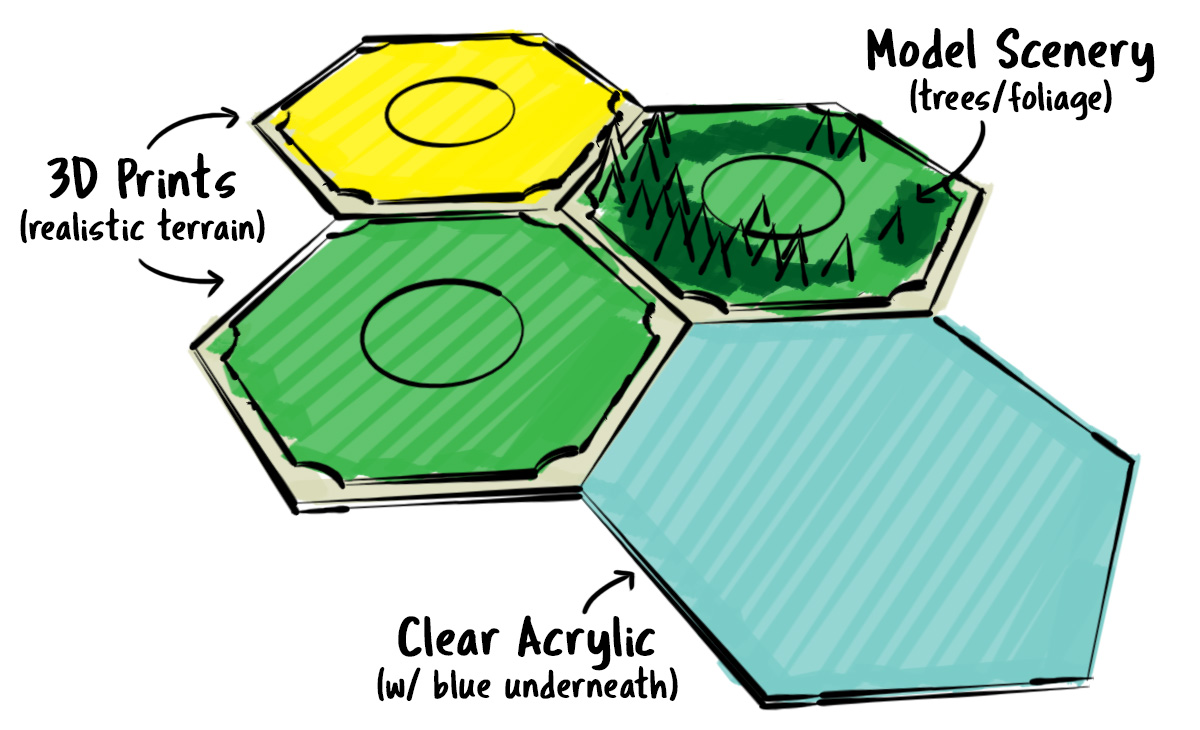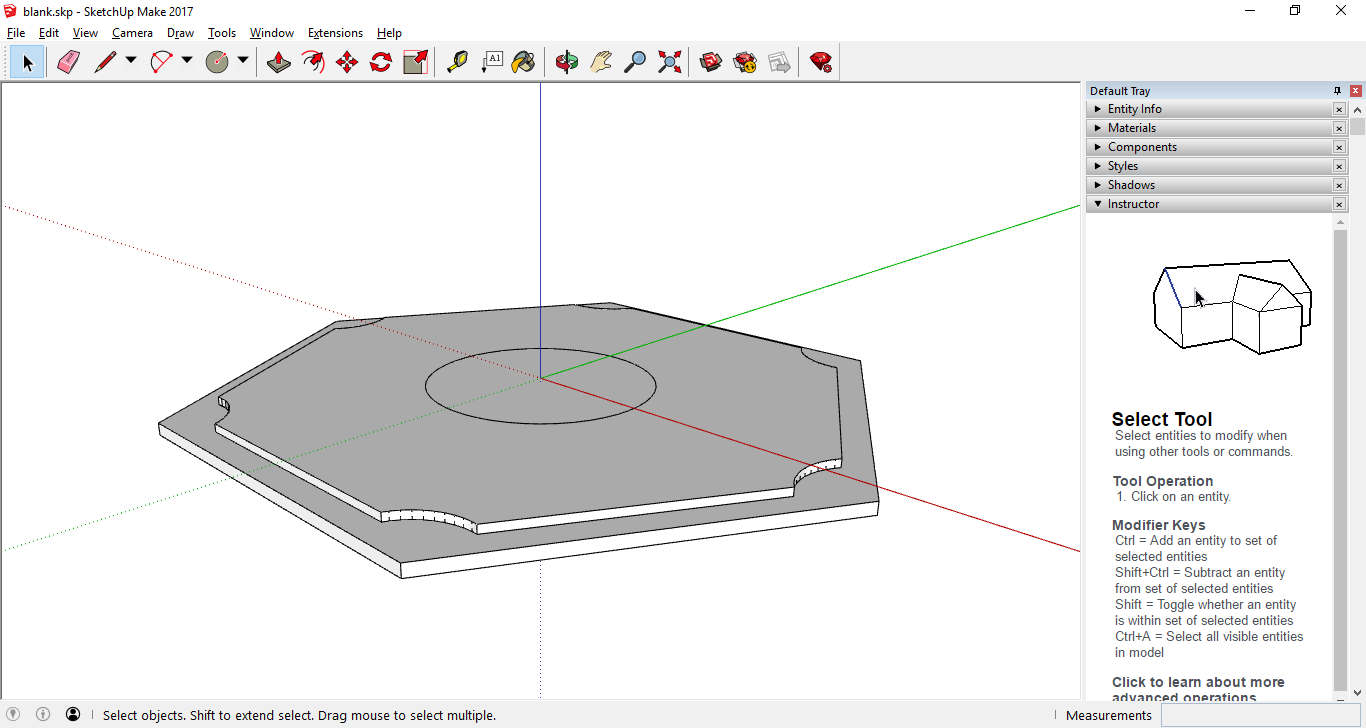I’ve been thinking about building a 3D Settlers of Catan board for a long time. Like, eleven or twelve years. I’ve made a few passes at it already with Sculpey, but I couldn’t ever get the hex bases precise enough to really fit nicely together.
But with the new 3D printer my brother gave me for Christmas, I can finally make precise hexes. And pretty much as soon as I opened the box, I knew it was finally time to make my board for real.

So if I’m going to make . . . uh . . . what, 30 terrain hexes? (After all, I might as well do the 5-6 player expansion, too) . . . so I should probably start by designing a blank hex, to use as a template for all the others.
Some numbers:
- The official out-of-the-box hexes for Settlers are ~79.2mm across, flat-to-flat. I feel there’s value in keeping things the same size (like compatibility with a non-3D expansion) so we’ll stick with that.
- I want the terrain tiles to sit flush with the water tiles, and I want to make the water out of laser-cut acrylic. Litko’s Basemaker service only offers acrylic in 1.5mm or 3mm thicknesses, so these hexes will be 1.5mm thick at their outside edges.
- The cardboard number chits are about 25mm across (I just measured my own), and with paint, primer, and possibly foliage they’ll need a little wiggle room. I’ll give them a 29mm diameter circle to be safe.
- The road pieces are 5mm wide, and they’ll need extra space too. I’m going to make the “inset” for the roads (an idea I’m borrowing from JAWong’s 3D settlers pieces) 3.25mm wide on each hex (for a total of a 6.5mm channel between two hexes).
- City pieces (larger than settlements) are 11.1mm diagonally across, so the circles (also JAWong’s idea, or at least that’s where I saw it first) at the corner of each hex need close to a 5.5+mm radius to clear them, plus extra space. I’m going to use an 8mm radius on my corner circles, just to be safe.
Okay! With all of these constraints, there’s not a lot left for me to worry about. I’ll crack open SketchUp, draw a couple hexagons and seven circles, click “Push/Pull” a couple times and . . . that’s pretty much it!

To make things easier on myself in the days to come, I’ve taken two additional preparatory steps: I’ve multiplied all the dimensions by 100 (so the hex is 79,200mm across) and I’ve left the origin (0mm, 0mm, 0mm) at the top, not the bottom, of the blank hex.
Stay tuned for part 2!
